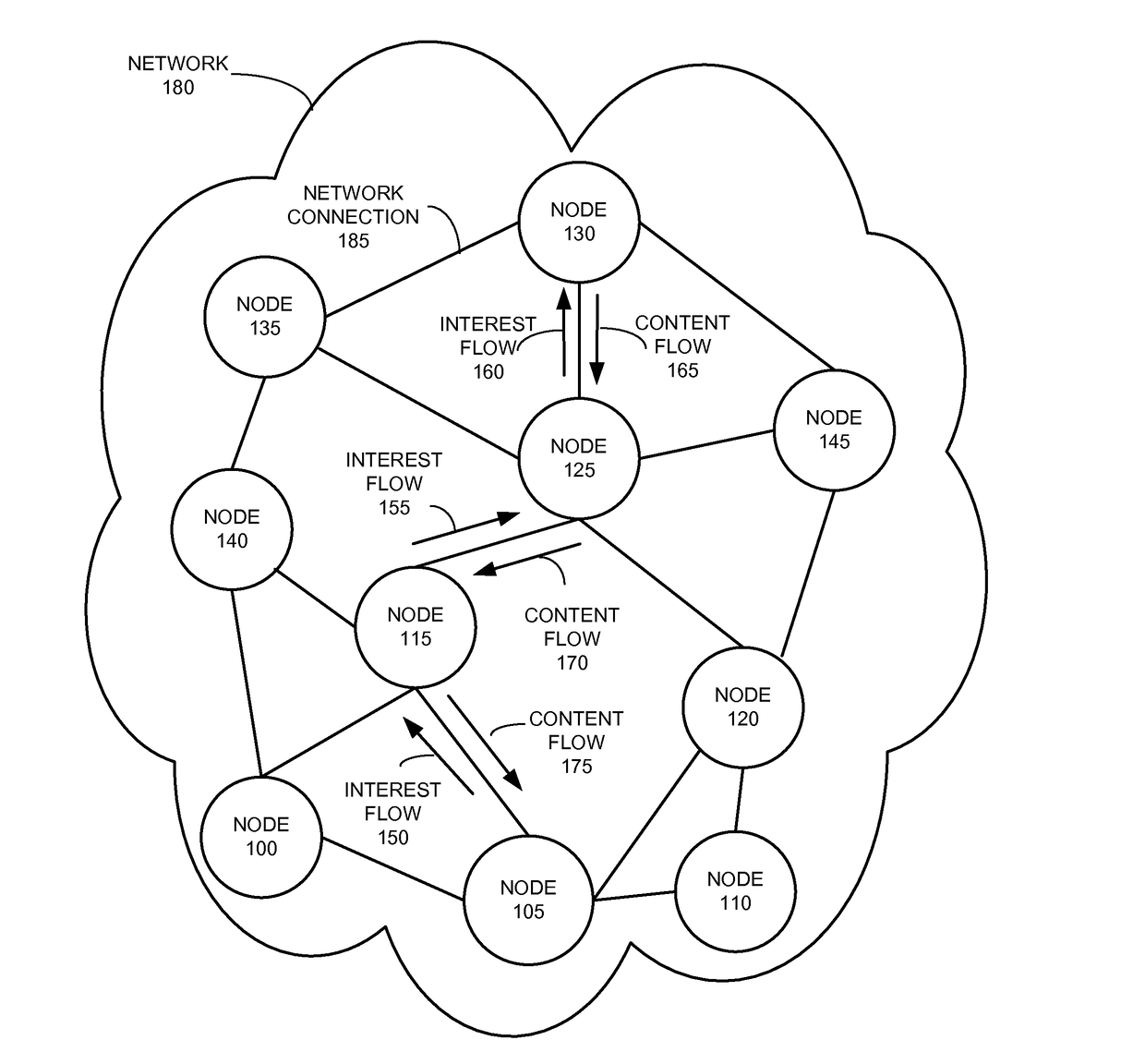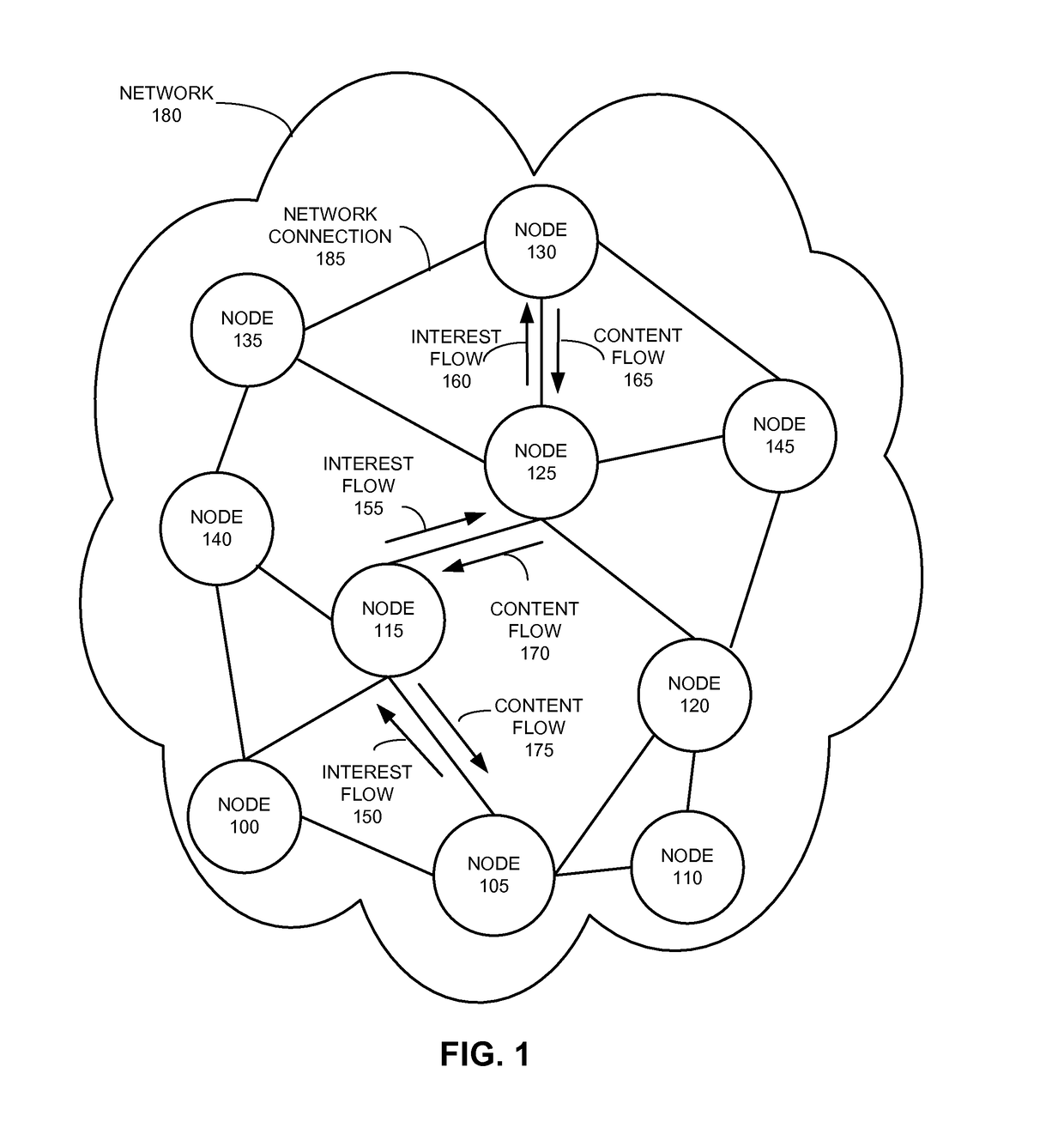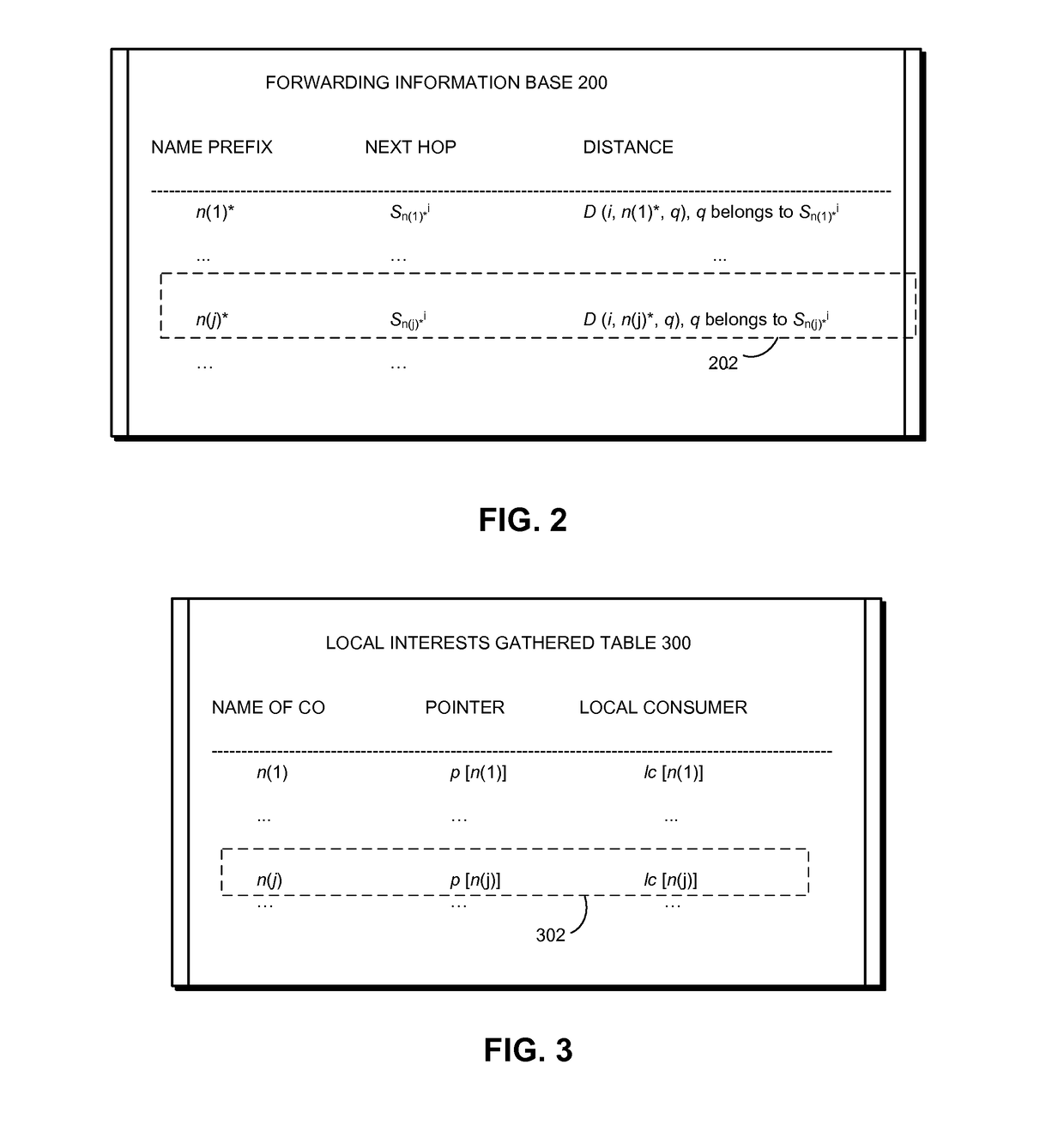System and method for stateless information-centric networking
a technology of information-centric networking and stateless networking, applied in the field of information-centric networks (icns), can solve the problems of progressively more restrictive addressing schemes to meet the ever-changing network demands
- Summary
- Abstract
- Description
- Claims
- Application Information
AI Technical Summary
Benefits of technology
Problems solved by technology
Method used
Image
Examples
Embodiment Construction
Overview
[0036]Embodiments of the present invention provide a novel CCN system, CCN-Gathering of Routes for Anonymous Messengers (CCN-GRAM). Routers implementing CCN-GRAM no longer need to maintain a Pending Interest Table (PIT). More specifically, CCN-GRAM operates with a stateless forwarding plane by forwarding Interests and responses to them as anonymous datagrams using destination-based forwarding tables. Each router assigns intervals to its neighbors and receives interval assignments from its neighbors, with each interval being a set of continuous identifiers. When a router forwards an Interest, it selects an identifier from the interval assigned by the receiver of the Interest to label the Interest. This label is changed on a hop-by-hop basis. The mapping between the previous hop of the Interest and the identifier used for forwarding the Interest is maintained at a local routing table to ensure that response to the Interest can be correctly forwarded back along the reverse path...
PUM
 Login to View More
Login to View More Abstract
Description
Claims
Application Information
 Login to View More
Login to View More - R&D
- Intellectual Property
- Life Sciences
- Materials
- Tech Scout
- Unparalleled Data Quality
- Higher Quality Content
- 60% Fewer Hallucinations
Browse by: Latest US Patents, China's latest patents, Technical Efficacy Thesaurus, Application Domain, Technology Topic, Popular Technical Reports.
© 2025 PatSnap. All rights reserved.Legal|Privacy policy|Modern Slavery Act Transparency Statement|Sitemap|About US| Contact US: help@patsnap.com



